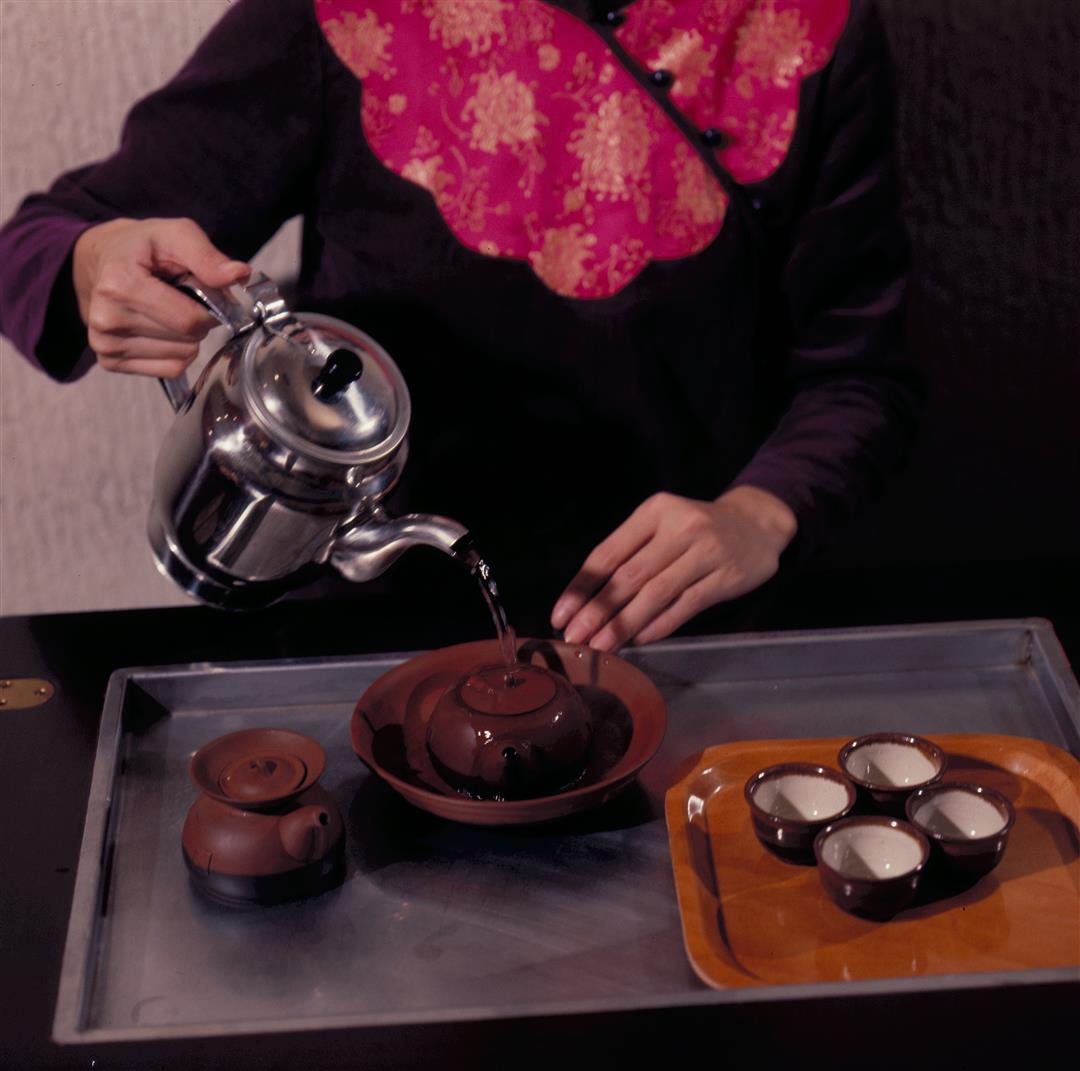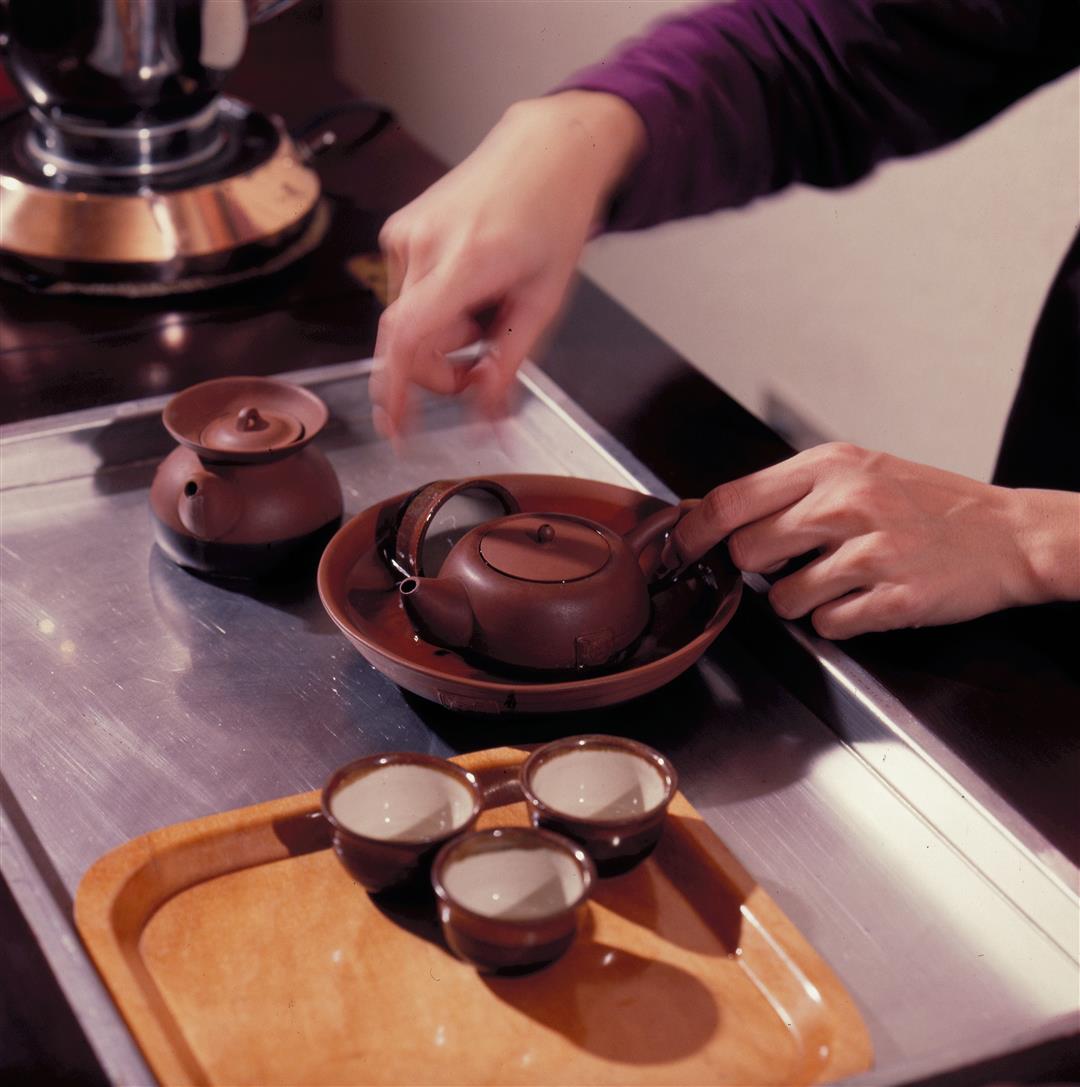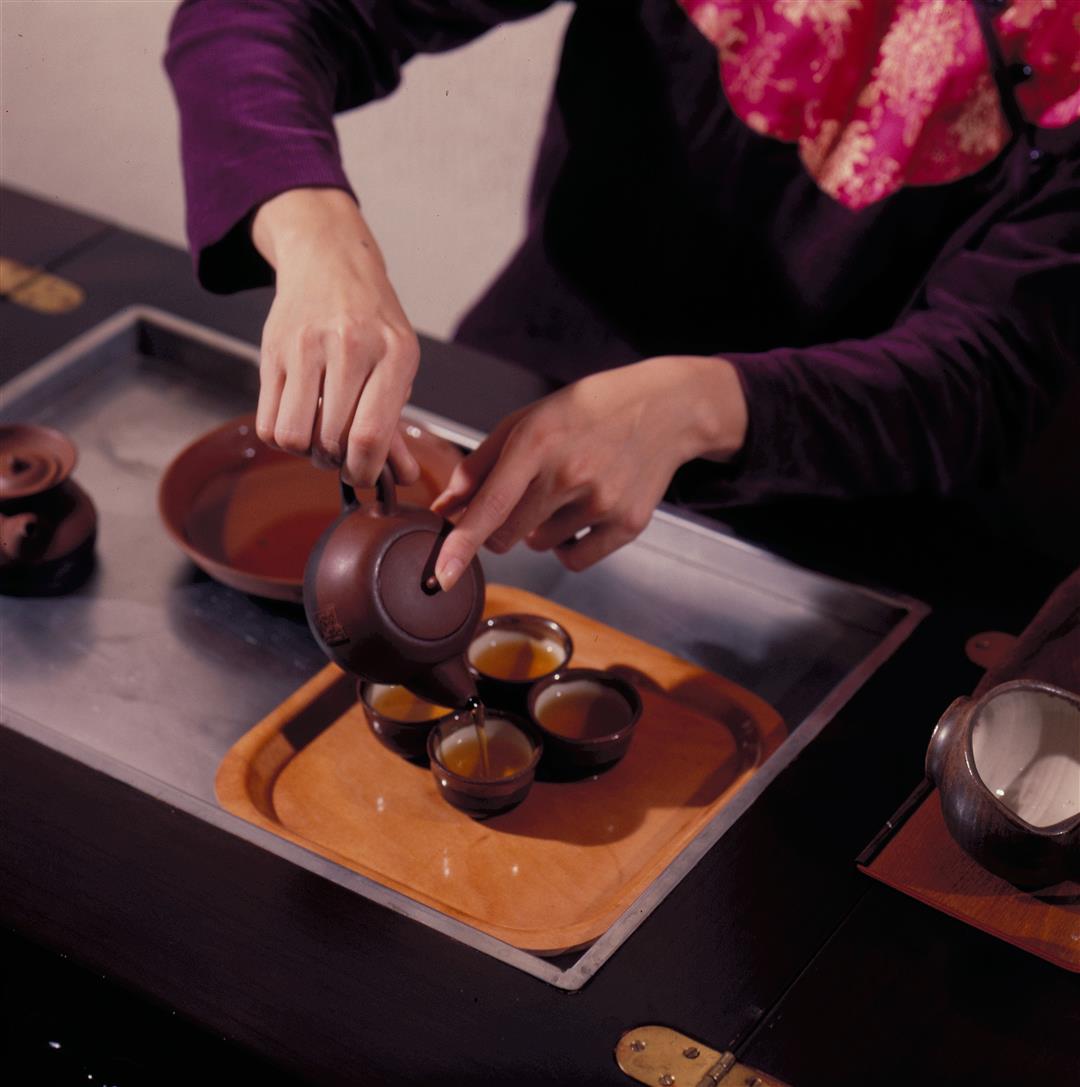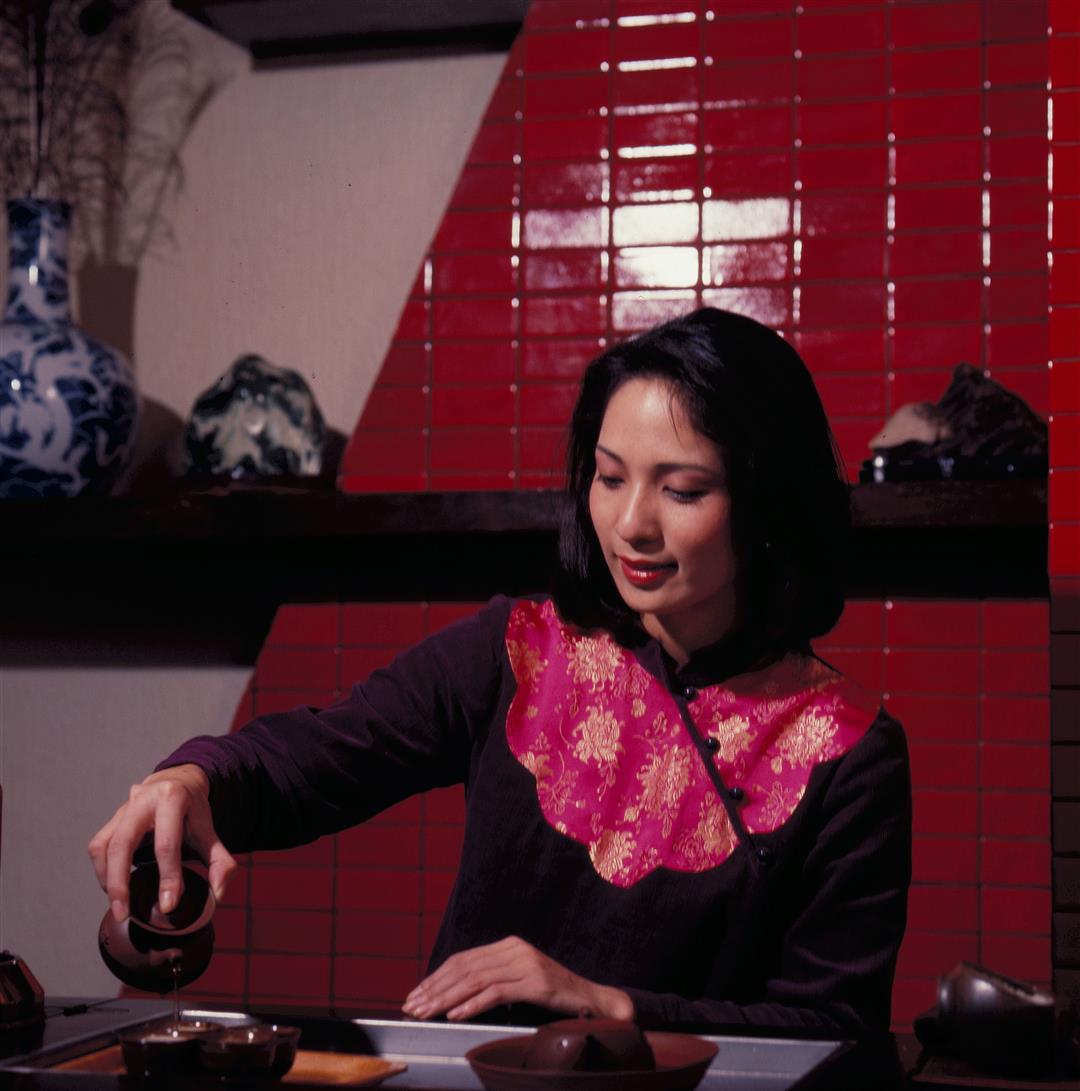Teahouses are nothing new in China, but a traditional Chinese would hardly recognize the new teahouses springing up around Taiwan. These new teahouses borrow something from the Western coffeehouse, but they use Chinese background music, Chinese paintings on the walls, aid they seek a really Chinese atmosphere. Young couples like to go there for a quiet time in subdued surroundings, and older people also seem to like the soothing environment and the chance to drink good tea outside their homes.
Tea has a long history in China. Its use can be traced back to the stone-age period, when it was sought after for medicinal properties. During the Western Han (206 BC-24 AD) Dynasty the leaves of the wild plant indigenous to Szechwan Province were used as a beverage, but at that time only the nobility indulged. During later dynasties, tea began to be consumed more widely, and it soon became as visible an item in the Chinese diet as the omnipresent rice. Methods of brewing were laid down. The Tea Classic, a major treatise on the subject compiled during the T'ang (618-907) Dynasty, is a testimonial to the serious attitude the Chinese have had toward tea. This early classic describes in great detail the etiquette to be observed during the drinking of tea.
Today, tea is popular for many reasons. Because people eat more meat and fish these days, tea helps as an after-dinner beverage to wash away their oily, clinging after-taste, something soda or fruit juices cannot do. Tea is also regarded, in the fast-paced modern Chinese society, as a tension reliever. Tea also serves a similar function to coffee in Western offices. Office workers sip tea as they ponder tedious problems. A tourist agent, one of the people we interviewed regarding tea, said that he meets many foreigners who enjoy tea and know something about it. Japan's famed tea ceremony attracts the interest of many fascinated tourists. He finds it curious that an item which had its origin and development in China is nowadays more closely associated with Japanese culture than Chinese.
Looking at the two cultures' view toward tea drinking, we find that the Japanese tea ceremony rules are extremely rigid. Participants first seat themselves in pre-designated places--they may not switch seats with somebody else--with one large cup of tea placed in front of one of them. Each person brings a piece of paper with which to wipe dry the rim of the teacup after each sip. Furthermore, the teacup must be turned thrice while it is being wiped before it can be passed to the next person. The Chinese tradition, on the other hand, is much less rigorous. Chinese want to enjoy themselves and relax while drinking, so usually no stringent rules dictate tea drinking.
So many people worldwide are familiar with the Japanese tea ceremony that some Chinese people have asked themselves why Chinese tea drinking is not as well known. As a result, a movement, to promote the art of Chinese tea drinking has been gradually gaining momentum. Tea centers, providing instruction in the art of tea drinking, have been opened. They are primarily open forums for exchanging opinions and ideas about tea. Since their inception, sixty-three sessions have been held. Now there are upwards of 2,000 participants at each session, generally well-educated individuals.
With tea drinking becoming more and more fashionable, many diverse members of society are becoming attracted to this pas time. Housewives notice how their husbands look forward to coming home for a cup of hot tea and warm conversation after a hard day's work. They even bring home business acquaintances or friends. Tea drinking has also provided a means of getting the entire family together in the evening for family talks. This is the traditional Chinese family lifestyle which had been disrupted because of the great changes brought about by modernization. Now with tea drinking back in vogue, perhaps even greater unity will be maintained within the Chinese family.
Modern Chinese believe that tea has many medicinal properties. Tea is said to be able to strengthen the heart and other muscles, stimulate blood circulation, and cure headaches. It is a source of vitamins, a stimulant and rejuvenator; can prevent high blood pressure or anemia, is a natural breath freshener, and is good for the metabolism--a general panacea.
There are hundreds of kinds of tea: green, jasmine, oolong, and black, are among the more well known. Usually each region in China is noted for its special and distinctive type of tea.
There are different teas for different occasions and temperaments. There are drinking rules and etiquette for connoisseurs, but other people prefer just to relax with friends over a cup of piping hot tea. Whatever group you fit into, the Chinese will tell you that the important thing to remember is to enjoy yourself!
[Picture Caption]
1. Believe it or not, a cup of tea and olives to welcome in the Spring are a Chinese tradition. 2. According to Chinese tradition, there is even a proper way to hold the teacup. 3. Teaplants are terraced on hillsides. 4-6. Tea sets vary greatly.
1. Tea ware and tidbits to munch. 2. Relaxing in a modern teahouse. 3. Traditional tea drinking can be enjoyed in the privacy of your home. 4. Before brewing tea, the teapot must first be bathed in hot water. 5. The next step is to spoon tea leaves into the pot. 6. Boiling water is poured from a distance into the small teapot holding the tea leaves. 7. The flavor of the first brew of tea is not mature, so it is dumped out into this special reservoir.
Tea must be just right for excellence. 1. Before drinking the first pot of tea, the teacups are first placed in the tea brine to warm them up. 2. Pouring tea is alternated simultaneously among all the teacups so that the concentration of tea is the same for each one--not too strong, not too weak. 3. Some people use a different method of pouring tea. The tea is poured into a second teapot until the desired strength is obtained. Then the tea solution is poured into the teacups. A perfect drink of tea requires skills in preparation and grace in serving.

According to Chinese tradition, there is even a proper way to hold the teacup.

Teaplants are terraced on hillsides.

Tea ware and tidbits to munch.

Relaxing in a modern teahouse.

Traditional tea drinking can be enjoyed in the privacy of your home.

Before brewing tea, the teapot must first be bathed in hot water.

The next step is to spoon tea leaves into the pot.

Boiling water is poured from a distance into the small teapot holding the tea leaves.

The flavor of the first brew of tea is not mature, so it is dumped out into this special reservoir.

Before drinking the first pot of tea, the teacups are first placed in the tea brine to warm them up.

Pouring tea is alternated simultaneously among all the teacups so that the concentration of tea is the same for each one--not too strong, not too weak.

Some people use a different method of pouring tea. The tea is poured into a second teapot until the desired strength is obtained. Then the tea solution is poured into the teacups. A perfect drink of tea requires skills in preparation and grace in serving.